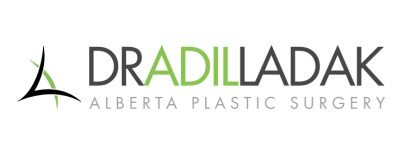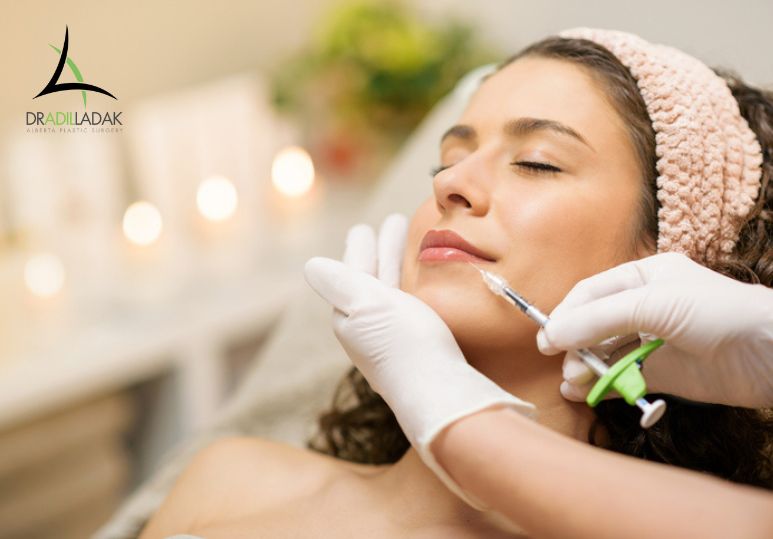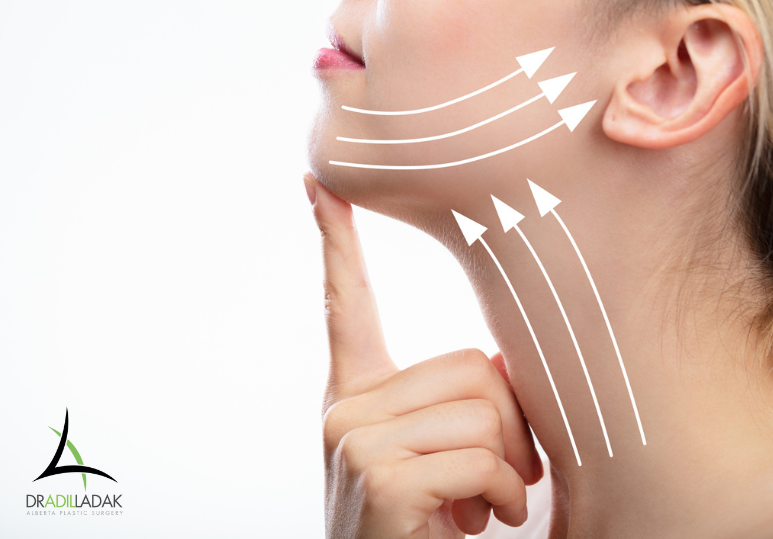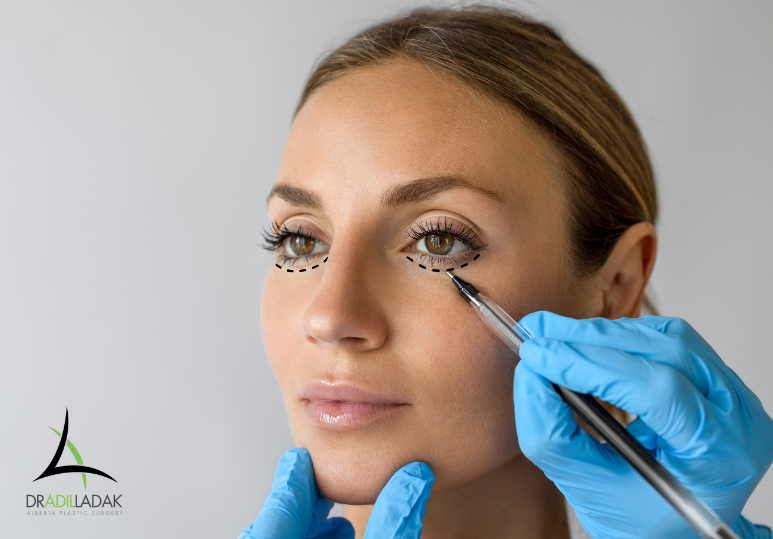BOTOX® And Tissue Fillers: What Are The Differences?
Although tissue fillers and BOTOX® are both injectable, non-surgical, cosmetic treatments, there are some key differences in their formulation, what cosmetic concerns they can address, and how long they last.
What Are They?
BOTOX®
BOTOX® is made from the botulinum toxin, a neurotoxin produced by the bacterium Clostridium botulinum. It works by blocking chemical signals that tell your muscles to contract, thereby temporarily paralyzing muscles in the target area. BOTOX® is completely safe and has been used for decades to treat various medical conditions like headaches, muscle spasms, and excessive sweating as well as for cosmetic use.
Tissue Fillers
Tissue fillers, also called dermal fillers, can be made from several substances including hyaluronic acids, collagens (natural or lab-formulated), and biosynthetic polymers. There are currently over 30 hyaluronic-based tissue fillers approved for use in Canada and plastic surgeons and dermatologists have been using them to treat wrinkles and lost volume for over a decade.
What Skin Concerns Can They Treat?
BOTOX®
BOTOX® is primarily used to address dynamic wrinkles. These are creases formed by facial movements like squinting, frowning, smiling, or furrowing our brows in concentration. These wrinkles often disappear when we relax our face, but over time the creases will become more pronounced and remain even when our muscles are at rest. BOTOX® injections can effectively:
- Smooth out forehead creases
- Minimize crow’s feet
- Eliminate lip lines and frown lines
- Lift drooping eyelids and brow
Tissue Fillers
Tissue fillers can also work to smooth out facial wrinkles and fine lines, but rather than paralyzing the muscles responsible for causing creases, they decrease the appearance of wrinkles by adding volume. By plumping the tissues underneath the skin, tissue fillers smooth and firm the skin for a more youthful appearance. Tissue fillers are ideal for:
- Plumping areas of lost volume including under the eyes, sunken cheeks, and sagging jawline
- Restoring facial symmetry
- Smoothing static wrinkles (those that are apparent, even when the face is at rest) such as frown lines and upper lip lines
- Augmenting thinning lips
Did you know that BOTOX® is an alternative to tissue fillers to achieve fuller lips?
Read more about BOTOX® Lip Flips.
How Long Do They Last?
BOTOX®
You will notice the effects of BOTOX® injections approximately 7-14 days after treatment. Typically your BOTOX® treatment results will last up to 12 weeks, but some patient experience results lasting up to four months. Movement to the muscles in the treatment area will return slowly as time passes. To maintain the results of your BOTOX® treatment, you will require regular maintenance injections.
Have you heard about the use of BOTOX® to avoid some of the visible signs of aging?
For more information read Should I Consider Preventative BOTOX®?
Tissue Fillers
You will notice an immediate plumping effect following a tissue filler treatment, but it could take up to three days for optimal results to be apparent. Depending on the type of tissue filler your doctor uses and the treatment location, the results of tissue fillers can last up to 8 months or even longer. Over time, your tissue fillers will dissolve and be eliminated naturally by your body. As with BOTOX® injections, maintenance tissue filler treatments are needed to keep your skin plump and smooth.
Beautiful Skin With Tissue Fillers And BOTOX® At Alberta Plastic Surgery
BOTOX® and tissue fillers can each smooth wrinkles and creases, improve skin tone, and restore a more youthful appearance. They can even be combined to deliver enhanced, maximum anti-aging results. To explore your options for injectable skin treatments including BOTOX® and tissue fillers book a complimentary consultation at Alberta Plastic Surgery today.
Dr. Adil Ladak is a board-certified and top surgeon in Edmonton, Alberta, and is highly skilled in cosmetic plastic surgery and other non-surgical rejuvenating cosmetic procedures. Dr. Ladak is a fully qualified Fellow of the Royal Canadian College of Physicians and Surgeons and his team is committed to providing patients with the facts and education to make the most informed decisions about their appearance and health. To explore all of your options to help you feel and look your best, visit Alberta Plastic Surgery in Edmonton by booking your complimentary consultation. Call us at (780) 407-6691 or fill out the form below.
FAQ
Q: Do tissue fillers and BOTOX® injections hurt?
A: Tissue filler and BOTOX® injections do not normally hurt, but some patients are uncomfortable with needles so a topical numbing lotion can be applied prior to treatment.
Q: Are tissue fillers and BOTOX® safe?
A: Tissue fillers and BOTOX® are approved by Health Canada and when administered by a skilled and qualified health care professional according to approved guidelines, are completely safe.
Q: Can I make my BOTOX® results last longer?
A: Every patient is unique, but the results of your BOTOX® treatment will typically last 3-4 months. There are some things you can do to increase the probability of longer-lasting results. Read BOTOX® Aftercare: Tips To Optimize Your Results.






